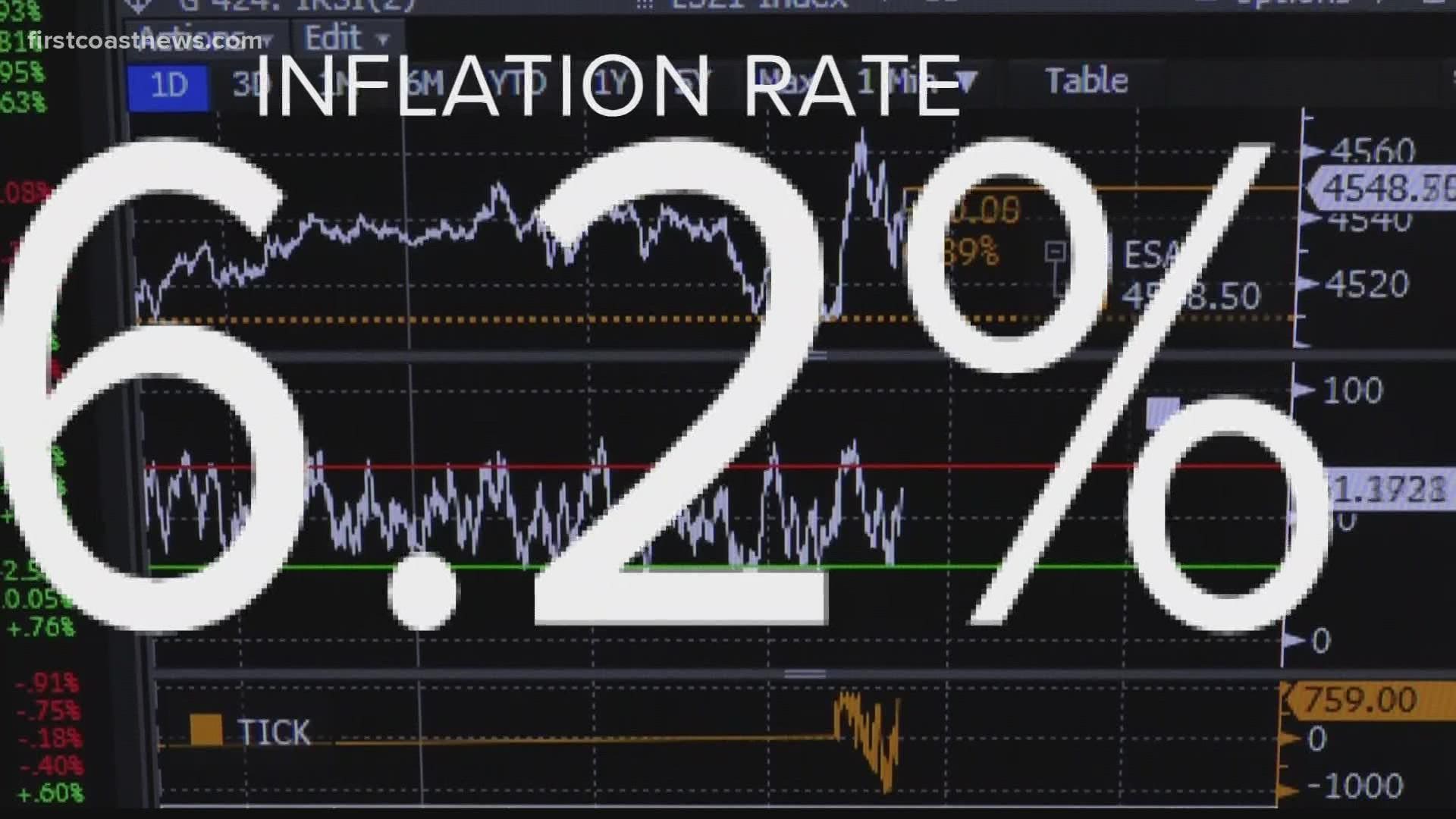WASHINGTON — Prices for U.S. consumers jumped 6.8% in November compared with a year earlier as surging costs for food, energy, housing and other items left Americans enduring their highest annual inflation rate since 1982.
The Labor Department also reported Friday that from October to November, prices jumped 0.8%.
Inflation has been intensifying pressure on consumers, especially lower-income households and particularly for everyday necessities. It has also negated the higher wages many workers have received, complicated the Federal Reserve’s plans to reduce its aid for the economy and coincided with flagging public support for President Joe Biden.
Fueling the inflation has been a mix of factors resulting from the swift rebound from the pandemic recession: A flood of government stimulus, ultra-low rates engineered by the Fed and supply shortages at factories in the U.S and abroad. Manufacturers have been slowed by heavier-than-expected customer demand, COVID-related shutdowns and overwhelmed ports and freight yards.
Employers, struggling with worker shortages, have also been raising pay, and many of them have boosted prices to offset their higher labor costs, thereby adding to inflation.
The result has been price spikes for goods ranging from food and used vehicles to electronics, household furnishings and rental cars. The acceleration of prices, which began after the pandemic hit as Americans stuck at homes flooded factories with orders for goods, has spread to services, from apartment rents and restaurant meals to medical services and entertainment.
The persistence of high inflation has surprised the Fed, whose chair, Jerome Powell, had for months characterized inflation as only “transitory,” a short-term consequence of bottlenecked supply chains. Two weeks ago, though, Powell signaled a shift, implicitly acknowledging that high inflation has endured longer than he expected. He suggested that the Fed will likely act more quickly to phase out its ultra-low- rate policies than it had previously planned.
Some economists are holding out hope that inflation will peak in the coming months and then gradually ease and provide some relief for consumers. They note that supply shortages in some industries have begun to gradually ease. And while higher energy costs will continue to burden consumers in the coming months, Americans will likely be spared from earlier forecasts that energy prices would reach record highs over the winter.
Oil prices have been declining modestly and leading, in turn, to slightly lower gasoline prices. A gallon of gas is averaging $3.38, according to AAA, down from $3.42 a month ago.
Even more dramatically, natural gas prices have plummeted nearly 40% from a seven-year high reached in October. The result is that while average home heating costs will well exceed last year’s levels, they won’t rise as much as had been feared.
Food prices, too, could potentially ease as a result of sharp declines in corn and wheat prices from their highs earlier in the year.
The average cost to heat a home this winter will be an estimated $972, said Mark Wolfe, executive director of the National Energy Assistance Directors Association. That’s less than the $1,056 his group had projected in October, though still higher than the average $888 consumers paid to heat homes last year.
A number of factors have been combining to ease energy prices in recent weeks. Unseasonably warm weather has helped drive down natural gas futures. In addition, the United States and several other major other major nations have agreed to release oil from their strategic reserves. And the OPEC+ oil cartel reached an accord to release more oil in January.
What’s more, the emergence of the omicron variant of the coronavirus has renewed the prospect of more canceled or postponed travel and fewer restaurant meals and shopping trips. All of that, if it happened, would slow consumer and business spending and potentially restrain inflation.
Still, analysts caution that unexpected developments, including heavy winter storms, with potentially increased demand for energy, could send energy prices surging again.
And analysts cautioned that easing overall inflation pressures will depend on further progress in normalizing global supply chains. Senior White House officials have said they believe that a series of actions that the administration has taken, from boosting the processing of cargo from the ports of Los Angeles and Long Beach to the release of crude oil from the petroleum reserve, would help defuse inflation pressures.
Some outside economists have begun to echo that view.
“I think November will be the worst of it, and going forward we will see steady improvement,” said Mark Zandi, chief economist at Moody’s Analytics. “As the delta wave of COVID has receded and supply chains start to repair themselves, we will start to see production and shipments improve.”
Zandi said he believes that inflation will begin improving with the December price report and that by this time next year, annual inflation will be back down to around 3%, closer to the Fed’s 2% target.
For now, though, against the backdrop of persistent high inflation, the Fed is expected to announce after it meets next week an acceleration reduction in its monthly bond purchases. Those purchases have been intended to lower long-term borrowing costs.
Doing so would put the Fed on a path to begin raising its key short-term interest rate as early as the first half of next year. That rate has been pegged at nearly zero since March 2020, when the coronavirus sent the economy into a deep recession.

